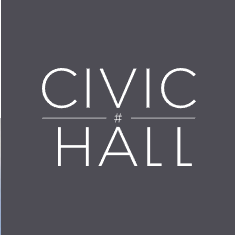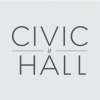IN MEXICO, COLLABORATING ON A CIVIC ENGAGEMENT APP
- ERHARDT GRAEFF
- September 15, 2015
- 2:25 pm
Our thesis is that everyone in the city is an expert. Residents have an intimate understanding of the spaces they frequent within the city and have unique perspectives on associated challenges and possibilities.

Mexico City is huge. Over 21 million people live in the metro area, the most populous in the Western Hemisphere. Nearly 9 million people live in the federal district alone. There are pockets of immigrants from all over the world and of course the full spectrum of Mexican ethnicities. This means there are myriad interesting issues to tackle and a wide mix of opinions on how best to go about it.
From August 31–September 4, 2015, the MIT Center for Civic Media traveled to Mexico City for a workshop organized by the Laboratório para la Ciudad and MIT Media Lab. Gabriella Gómez-Mont, the Laboratório’s founder and director, is a Director’s Fellow at the Media Lab this year.
The workshop was an experiment in collaboration and innovation, part of the Laboratório’s mission. Considering how we at the Center for Civic Media strive to design civic interventions collaboratively with local partners, this was an exciting opportunity for us.
In a few intense days, we worked with Laboratório staff and local experts, as well as select students from nearby universities, to prototype projects worthy of Mexico City’s scale and complexity. Teams were organized by topic area—learning, data and mobility, and civic tech—and relied on a mix of existing and speculative technologies brought to the table by participants. Our team chose to focus on how to integrate new forms of citizen input into the planning and transformation of public spaces around the city using both digital and non-digital strategies. Our solution: EncuestaCDMX.
MAPPING CITIZEN INPUT IN REVITALIZATION
Our team’s thesis is that everyone in the city is an expert. Residents have an intimate understanding of the spaces they frequent within the city and have unique perspectives on associated challenges and possibilities.
On our first day, we spoke with two sets of experts to get a better understanding of the problem space. We met with members of Neri Vela, a community organization, to learn about citizen voice in the context of Mexico City and community organizing around redevelopment. We also sat down with representatives from the Public Space Authority, a government entity responsible for revitalization projects in public spaces throughout the city, to learn how they incorporate citizen input into their decision making.
We identified opportunities to increase citizen voice and engagement in the planning process through the following channels:
a multi-modal data collection system inclusive to citizens with different levels of digital access (in-person interviews + smartphone app use), and
a public dashboard to provide analysis and visualization of collected feedback for both government officials and citizens
Our design goals for these channels emphasized securing buy-in from both officials and participating citizens. We considered the question: how might we incentivize engagement on both sides of this planning dialogue by making the input and analysis components accessible and relevant?
TEST SITE IDENTIFICATION
As a test location, we chose Libertad de los Pueblos, also known as Ho Chi Minh Park. Located two blocks away from the Laboratório in a high traffic area, the park was an ideal pilot space due to its proximity. The space was also under consideration for revitalization according to city staff, making the feedback we were soliciting from citizens relevant and authentic. Finally, it offered the opportunity to engage with a diverse mix of citizens as it attracts all manner of commuters, vendors, bus drivers, and residents.
COMMUNITY ENGAGEMENT DESIGN
Before developing our survey, we did initial viability testing with citizens in the park to hear some of their initial impressions of the area.
One man we spoke with lives far to the north of the City. He works as a plumber and comes to the park to rest on a daily basis. His true passion is dancing and he said he would be interested in joining dance events if put on in the park. This helped us confirm cultural activities as a resonant category.
SURVEY DEVELOPMENT
We built on the Public Space Authority’s basic structure of prioritizing problems and opportunities by adding more experiential questions meant to assess how the space made residents feel and what words they associated with it. Through these fields we hoped to get a quick impression of what the park represents to people, rather than simply its specific problems or potential.
In order to ensure an inclusive range of feedback, we developed both digital and non-digital outlets for citizens to participate. Working with a team of surveyors, we used a tool already being deployed in Mexico City (Flocktracker) to record interview responses with over 50 users of the park during a 40 minute window.
We found citizens were happy to be asked their opinion and offered detailed feedback on how they currently used the park and what they would like to see implemented in the space.

Screenshot courtesy MIT Center for Civic Media
THE ENCDMX APP
To complement in-person surveys, we extended the Action Path app developed by the MIT Media Lab’s Center for Civic Media to allow smartphone users to submit their feedback directly. The Android app sends push notifications to users as they walk by the space, asking the same questions as the in-person interviews.
Using this location-based smartphone service, we are able to engage citizens who might be in the space when official surveyors are not present. The app can also reach those who may avoid in-person surveys and might prefer to offer their opinion in a private context.
PUBLIC DASHBOARD
In the interests of providing both city planners and citizens with real-time feedback on the information coming in, we developed a public dashboard that aggregates and visualizes the results from both channels.
In the case of our survey of Ho Chi Minh Park, the primary concern identified by citizens was trash and overall cleanliness. About a quarter of those surveyed said that free Wi-Fi would be one of the best additions to the park. The majority, however, suggested programming we had not included in our list, such as activities for kids and vocational training—underlining the value of citizen expertise. The word cloud provides a quick look into the impression most people have of the park.
When future surveys are administered, we plan to distribute cards with the dashboard URL so that citizens can see how their responses fit into the bigger picture informing the Public Space Authority’s planning. This helps incentivize participation by closing the feedback loop, and creates an opportunity for public accountability.
FUTURE WORK
This week was a first step toward our big picture vision for engaging citizens in the planning of public spaces and capitalizing on their expertise. In the future, we want to:
Make the app and survey process more playful, experimenting with different incentive structures among citizen survey takers and official surveyors
Develop an installation like a kiosk or interactive signage that can increase the modes of engagement and thereby the inclusivity of the system
Work with the Public Space Authority on a revitalization process from start to finish to create a system that truly expands and transforms the use of citizen voice in planning and policy-making
Replicate the model with other partners and issues both within and beyond Mexico City
EncuestaCDMX was itself an incredible collaboration of citizen experts. We are thrilled to have had the opportunity to work with such a wide range of actors throughout the week and hope this deployment represents the start of a fruitful collaboration between the MIT Center for Civic Media and Laboratório para la Ciudad.
A version of this post was originally published on the MIT Center for Civic Media blog. Emilie Reiser contributed to the writing of this report.

